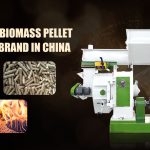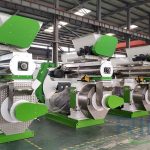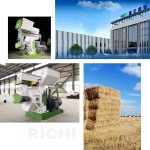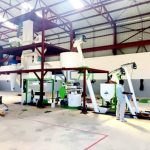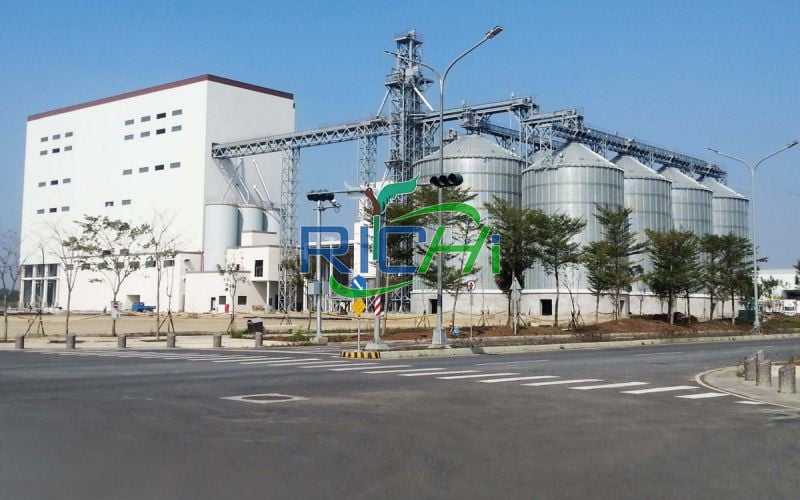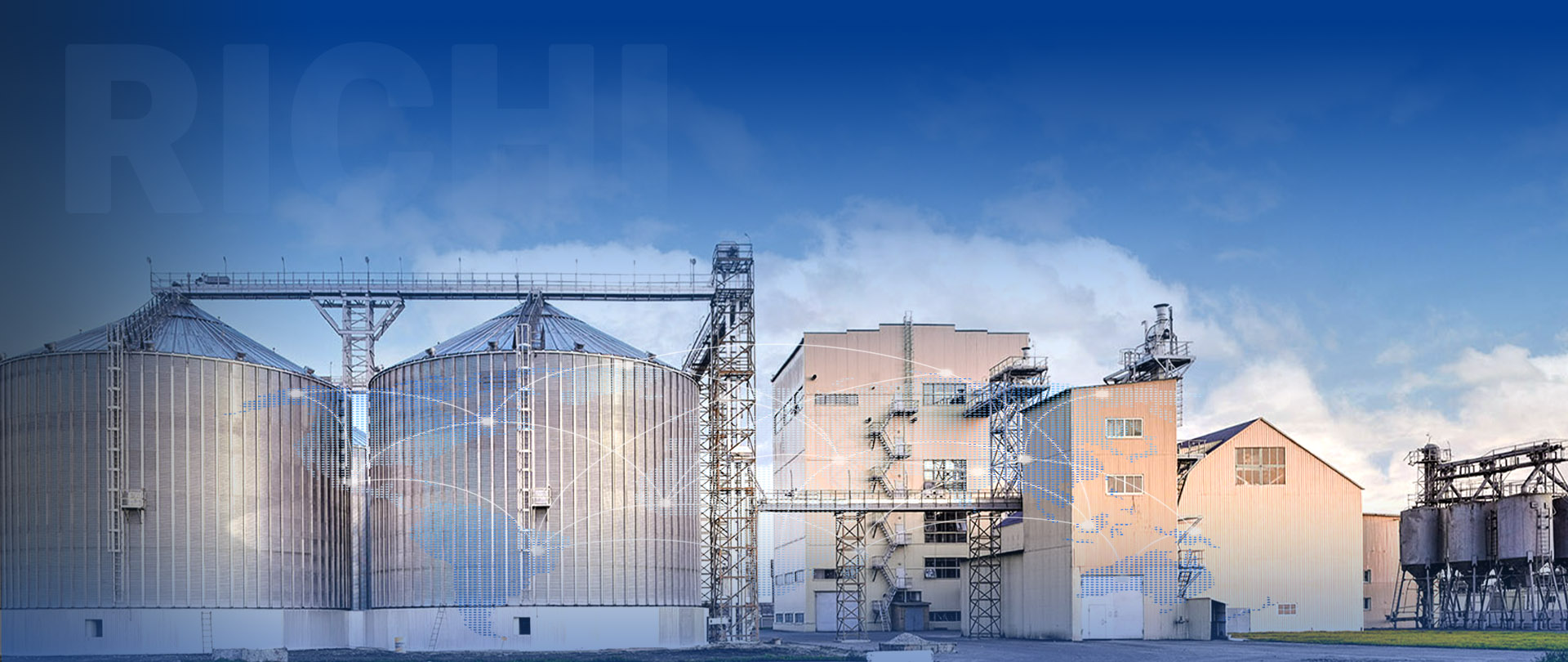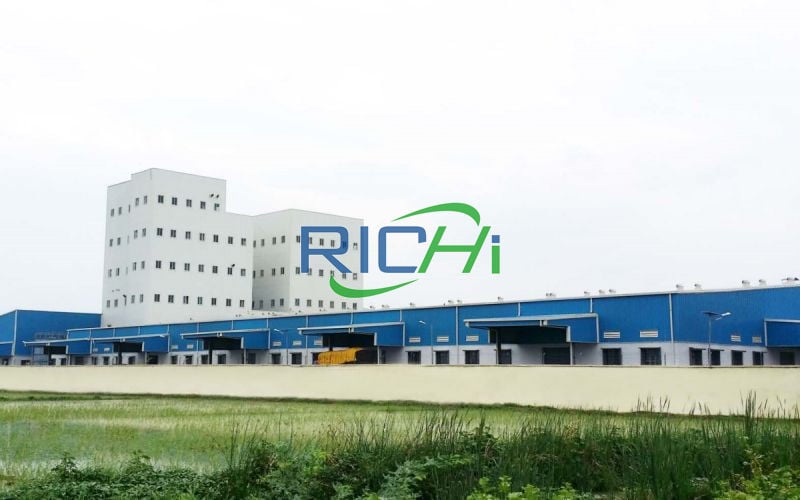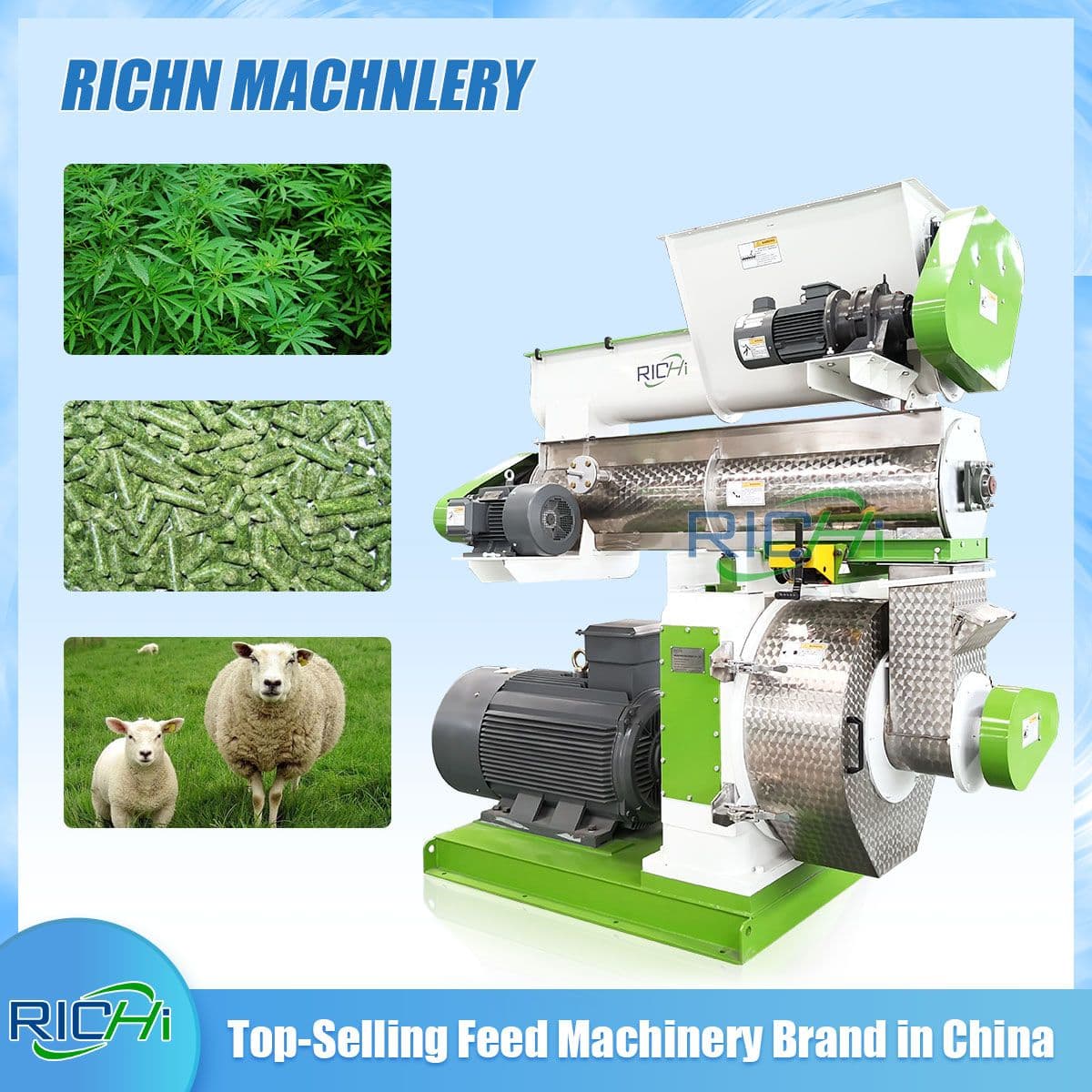A 20 tons per hour (t/h) livestock feed production line represents a significant investment in the animal feed industry. While the primary focus is often on maximizing production efficiency and profitability, the equipment costs also have a profound impact on environmental protection. This article explores how the equipment costs of a 20t/h livestock feed production line influence environmental sustainability and the long-term benefits of investing in environmentally friendly technologies.
Key Equipment Components and Their Environmental Impact
The primary equipment required for a 20t/h livestock feed production line includes:
- Raw Material Handling Equipment
- Grinding Equipment
- Mixing Equipment
- Pelleting Equipment
- Cooling and Drying Equipment
- Screening and Grading Equipment
- Packaging Equipment
- Auxiliary Equipment
Cost Allocation Breakdown and Environmental Considerations
- Raw Material Handling Equipment
Raw material handling equipment is essential for the initial stages of feed production, including receiving, cleaning, and conveying raw materials.
- Components: Silos, storage bins, pre-cleaners, bucket elevators, and conveyors.
- Environmental Impact: Efficient raw material handling reduces waste and minimizes dust emissions.
- Cost Allocation: Typically, raw material handling equipment accounts for 10-15% of the total equipment cost.
Example:
- Silos and storage bins: $50,000
- Pre-cleaners: $20,000
- Bucket elevators and conveyors: $30,000
- Total: $100,000
Environmental Benefit: Investing in high-quality pre-cleaners and dust control systems can significantly reduce particulate emissions, improving air quality and reducing the environmental footprint of the feed mill.
- Grinding Equipment
Grinding equipment is used to reduce the size of raw materials, making them suitable for mixing and pelleting.
- Components: Hammer mills or pulverizers.
- Environmental Impact: Energy-efficient grinders reduce electricity consumption and lower greenhouse gas emissions.
- Cost Allocation: Grinding equipment usually represents 10-15% of the total equipment cost.
Example:
- Hammer mills: $80,000
- Total: $80,000
Environmental Benefit: Investing in energy-efficient grinding equipment can reduce the feed mill’s overall energy consumption, leading to lower carbon emissions and operational costs.
- Mixing Equipment
Mixing equipment ensures that the ground raw materials are uniformly blended to create a consistent feed mixture.
- Components: Horizontal or vertical mixers.
- Environmental Impact: Efficient mixers reduce batch variability and waste.
- Cost Allocation: Mixing equipment typically accounts for 10-15% of the total equipment cost.
Example:
- Horizontal mixers: $90,000
- Total: $90,000
Environmental Benefit: High-quality mixers ensure uniform blending, reducing the likelihood of feed waste and improving the overall efficiency of the production process.
- Pelleting Equipment
Pelleting equipment is the core of the feed production line, converting the mixed feed into pellets.
- Components: Pellet mills, conditioners, and pellet coolers.
- Environmental Impact: Efficient pellet mills reduce energy consumption and improve pellet quality, reducing waste.
- Cost Allocation: Pelleting equipment generally constitutes 25-30% of the total equipment cost.
Example:
- Pellet mills: $150,000
- Conditioners: $30,000
- Pellet coolers: $50,000
- Total: $230,000
Environmental Benefit: Investing in advanced pelleting technology can enhance pellet quality and consistency, reducing the need for reprocessing and minimizing waste.
- Cooling and Drying Equipment
After pelleting, the feed pellets need to be cooled and dried to ensure they are stable and ready for storage or packaging.
- Components: Counter-flow coolers, drying systems.
- Environmental Impact: Efficient cooling and drying systems reduce energy consumption and emissions.
- Cost Allocation: Cooling and drying equipment typically account for 10-15% of the total equipment cost.
Example:
- Counter-flow coolers: $50,000
- Drying systems: $40,000
- Total: $90,000
Environmental Benefit: Modern cooling and drying systems with heat recovery features can significantly reduce energy usage and emissions, contributing to a lower environmental impact.
- Screening and Grading Equipment
Screening and grading equipment is used to separate fines and ensure that the feed pellets meet the desired size specifications.
- Components: Rotary grading sieves, vibrating screens.
- Environmental Impact: Efficient screening reduces waste and improves product quality.
- Cost Allocation: Screening and grading equipment usually represents 5-10% of the total equipment cost.
Example:
- Rotary grading sieves: $30,000
- Vibrating screens: $20,000
- Total: $50,000
Environmental Benefit: High-quality screening and grading equipment ensures that only the best quality feed pellets are packaged, reducing waste and improving overall production efficiency.
- Packaging Equipment
Packaging equipment is essential for preparing the finished feed pellets for storage, transportation, and sale.
- Components: Bagging machines, palletizers.
- Environmental Impact: Efficient packaging systems reduce material waste and improve logistics efficiency.
- Cost Allocation: Packaging equipment typically accounts for 5-10% of the total equipment cost.
Example:
- Bagging machines: $40,000
- Palletizers: $20,000
- Total: $60,000
Environmental Benefit: Investing in automated and efficient packaging systems can reduce material waste and improve the sustainability of the feed production process.
- Auxiliary Equipment
Auxiliary equipment includes various supporting systems that ensure the smooth operation of the feed mill.
- Components: Dust collection systems, boilers for steam generation, electrical control systems.
- Environmental Impact: Efficient auxiliary systems reduce emissions and improve overall environmental performance.
- Cost Allocation: Auxiliary equipment generally constitutes 10-15% of the total equipment cost.
Example:
- Dust collection systems: $30,000
- Boilers: $50,000
- Electrical control systems: $40,000
- Total: $120,000
Environmental Benefit: High-quality dust collection and emission control systems can significantly reduce air pollution, contributing to a cleaner and safer working environment.
Total Equipment Cost Allocation
Summarizing the cost allocation for all the equipment components, we get:
- Raw Material Handling Equipment: $100,000
- Grinding Equipment: $80,000
- Mixing Equipment: $90,000
- Pelleting Equipment: $230,000
- Cooling and Drying Equipment: $90,000
- Screening and Grading Equipment: $50,000
- Packaging Equipment: $60,000
- Auxiliary Equipment: $120,000
Total Equipment Cost: $820,000
Long-Term Environmental Benefits
- Reduced Energy Consumption
Investing in energy-efficient equipment can significantly reduce the overall energy consumption of the feed production line. This not only lowers operational costs but also reduces the carbon footprint of the facility.
- Minimized Waste
High-quality equipment ensures consistent production processes, reducing the amount of waste generated. Efficient mixing, pelleting, and screening processes ensure that raw materials are used effectively, minimizing feed waste.
- Improved Air Quality
Advanced dust collection and emission control systems reduce particulate emissions, improving air quality both inside and outside the facility. This contributes to a healthier working environment and reduces the environmental impact of the feed mill.
- Sustainable Packaging
Automated and efficient packaging systems reduce material waste and improve logistics efficiency. Sustainable packaging materials and practices further enhance the environmental performance of the feed production line.
- Compliance with Environmental Regulations
Investing in high-quality, environmentally friendly equipment ensures compliance with local and international environmental regulations. This reduces the risk of fines, legal issues, and reputational damage.
Conclusion
The equipment costs of a 20t/h livestock feed production line have a significant impact on environmental protection. By investing in high-quality, energy-efficient, and environmentally friendly equipment, feed mill operators can reduce their environmental footprint, improve operational efficiency, and ensure long-term sustainability.
While the initial investment may be higher, the long-term benefits in terms of reduced energy consumption, minimized waste, improved air quality, and compliance with environmental regulations make it a worthwhile investment. As the demand for sustainable and environmentally responsible practices continues to grow, investing in environmentally friendly equipment will not only benefit the environment but also enhance the reputation and profitability of the feed pellet production line.
